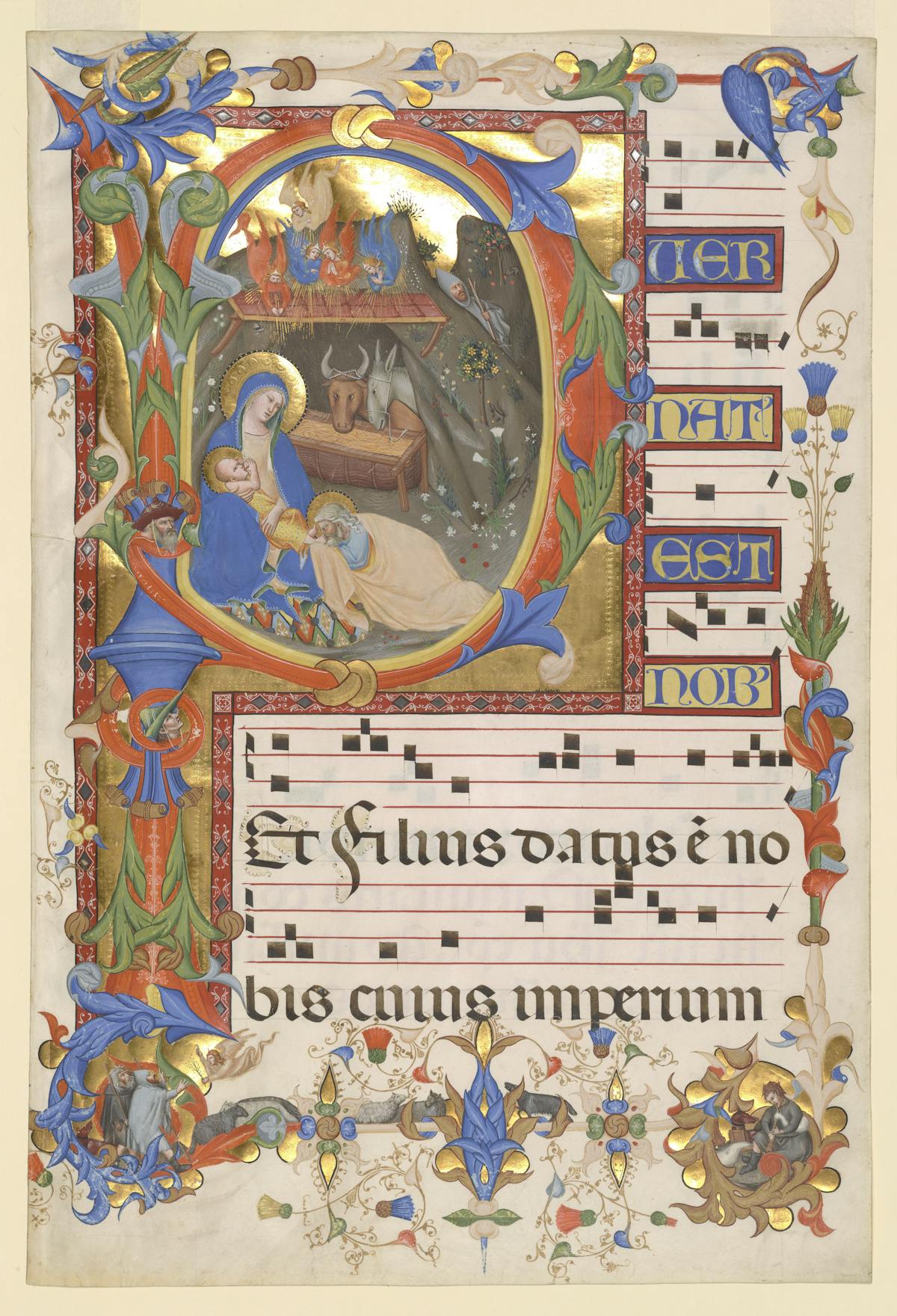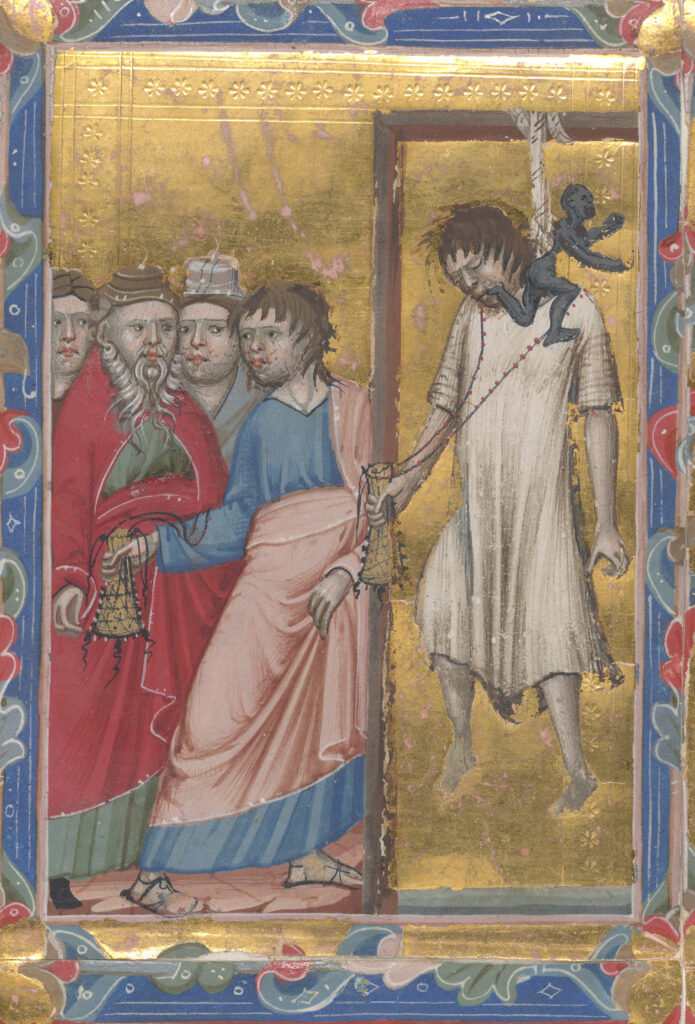Lucre and the Lord at the Morgan
Two exhibits at the legendary banker’s library show what money can buy, and what it costs to splurge on the sacred.

‘Morgan’s Bibles: Splendor in Scripture‘
The Morgan Library and Museum, 225 Madison Ave, New York, NY
Through January 21, 2024
‘Medieval Money, Merchants, and Morality‘
Through March 10, 2024
Money and manuscripts — one could do worse than those words to capture the legacy of John Pierpont Morgan and his library on Madison Avenue. That is especially true this season when the gem that’s an easy walk from Grand Central hosts both “Morgan’s Bibles: Splendor in Scripture” and “Medieval Money, Merchants, and Morality.” Rarely has the alliance between Mammon and monotheism been brought into such glorious relief.
Start with the bibles, illustrated and bound with such grandeur that they could have been handed down from Sinai. The Burning Bush would have blushed. The first one on view is the “Biblia polyglotta,” which features the Holy Writ rendered into Latin, Hebrew, Greek, and Aramaic, then called Chaldean. The four tongues entwine a sinuous Scripture whose typography confirms the universality of God’s Word.
Just as remarkable as this divine design is the tale of how Morgan acquired this treasure, which was printed in Spain in the early 16th century. The banker was strolling to his London office and stopped at Sotheran’s, a bookseller. There, he picked up not only the many-tongued bible, but also a Gutenberg one and Shakespeare’s four folios, to boot. That German trailblazer is here, an elegant and clear pioneer, as readable today as when its type first moved.
Less clear but even more compelling are charred Coptic manuscripts from the eighth century and ninth century, discovered near Al-Fayyūm, in Egypt. Their darkened pages are turned to the two books of Samuel. Tradition teaches that St. Mark himself introduced Christianity to Egypt when Claudius was emperor. Morgan bought nearly 60 of these manuscripts, all of which belonged to the venerable Monastery of St. Michael.
Morgan’s acquisitions did not neglect the New World, and on display is the Algonquin Bible, translated by the missionary John Eliot into the Natick dialect. It was printed at Cambridge less than 30 years after Harvard’s founding in 1663. From the previous century is one of the Great Bibles commissioned by an English statesman, Thomas Cromwell, and approved by Henry VIII himself. A King James Bible, from 50 years later, is here as well.
Also Henry’s were the “Golden Gospels of Henry VIII,” which date from the 10th century but appear in a 1542 inventory of the king’s library at Westminster Palace. It’s stunning, almost decadent, in purple vellum, as if that pigment of royalty soaked through the scriptures. The letters are written in gold ink, scratched out by monks at Trier who little could have known that their handiwork would one day be owned by the ruler who broke with Rome.
A visitor to the Morgan ascends to reach “Medieval Money,” but the exhibit’s view of wealth is distinctly negative. Manuscripts illustrate the wages of avarice and covetousness and oppose them to the rewards of the righteous. A brutal piece from the 14th century, “Judas Attempts to Return the Silver and Judas Hanged,” contrasts with “St. Francis Renouncing His Worldly Goods,” a study in renunciation and poverty glorified.

The church, though, did not always heed the example of that impecunious saint. On display are documents of indulgence, described by the Church as “a remission before God of the temporal punishment due to sins.” In practice, this meant buying absolution, a practice that so offended one priest, Martin Luther, that he nailed theses to a church door in protest. One here, from 1509, indicates that funds will be used to build St. Peter’s Basilica.
One could hope for more on the Jews, who, at a time when the Church proscribed usury, were forced into the practices of money lending that would ultimately prove to be embryonic to the development of modern finance. Jewish law propounds a distinct attitude toward worldly goods than that espoused by the Gospels and could have thrown into sharper relief the contradictions of the championing of poverty by a Church wealthy beyond reckoning.
“Death and the Miser,” by Hieronymus Bosch, captures this sensibility with ravishing weirdness. A man on his deathbed is surrounded by demons. One monster carries a lantern with fire from hell. Another, with the face of a rat, collects coins in a strongbox. A third fingers an envelope sealed with red wax, possibly an indulgence of the sort that funded Michelangelo’s work on the Sistine Chapel. As Morgan knew, beauty rarely comes cheaply.

